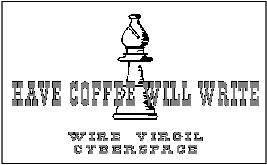MRS. LINCOLN, A LIFE…
Mrs. Lincoln, A Life
by
Catherine Clinton
From the earliest years of settlement, the rising birthrate of mixed-race children induced authorities to attempt to resolve miscegenations with a stroke of the pen: in 1662, the Virginia assembly passed legislation declaring that slave offspring inherited the status of the mother (partus sequitur ventrem). This law provided white males with an incentive to prefer slave women as illicit sexual partners–as they could not be charged with bastardy. Racial differentiation had been a paramount concern in the colonial era, and when Kentucky began to tackle these issues, it followed its sister state, Virginia. p. 23
Like most of the unmarried women of her age and background, Mary Todd was absorbed by the trials and tribulations of courtship. The dance to the altar was often portrayed as a brief shinning moment in what could otherwise be seen as a dull series of prescribed roles. By the early decades of the nineteenth century, eligible women could make their own selections of mates from available swains. Society increasingly regarded marriage as a symbol of love between two people, rather than an alliance engineered between two families. It was a woman’s prerogative to find a fiancé from among the parade of eligible suitors. With a suitable choice, families would acquiesce to the young people’s wishes. This was a transformative process, and one in which women presumably improved their chances of happiness in the marriage lottery. p. 38
Equally impressive, Mary discussed the finer points of politics and eagerly demonstrated her connections to the good and great. Here was a woman who told stories about Henry Clay from personal experience. Lincoln’s god was Mary’s idol as well, but she claimed him as a family friend. Why wouldn’t Lincoln have been bedazzled by this new Miss Todd in town? p. 45
That I found only three passages, and those all in the first 45 pages of a 336-page volume, is no reflection upon the quality of either the writing or the information in Clinton’s book. I found it packed and well written. I pulled these three passages from the total because the first two informed me in ways I was not before informed and because the third, I think, so well sets up who Mary Todd Lincoln was.
Great thanks to Sherry Chandler on whose blog I first found mention of this biography. In fact, I think it telling that after-the-fact I discovered that Sherry and I had independently chosen to pull out the miscegenations passage.






